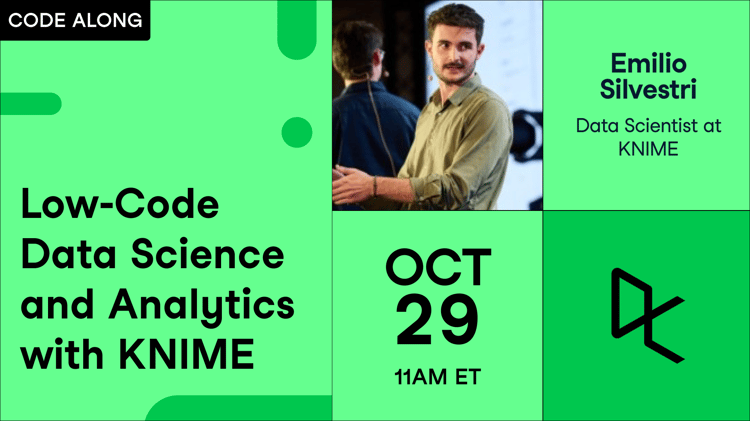Course
KNIME courses
Explore KNIME training for all levels. KNIME is a data science platform that enables workflows through powerful open-course tools for data analysis, reporting, and integration without coding. Build your skills through interactive courses, skill tracks, and tutorials curated in partnership with KNIME’s team.
Create Your Free Account
or
By continuing, you accept our Terms of Use, our Privacy Policy and that your data is stored in the USA.Training 2 or more people?
Try DataCamp for BusinessKNIME training for beginners
Learn KNIME from scratch through step-by-step videos and interactive exercises.
BasicSkill Level
3 hours
961
Track
KNIME Fundamentals
17 hours
599
Not sure where to start?
Take an AssessmentBrowse KNIME courses and tracks
Course
Introduction to KNIME
BasicSkill Level
3 hours
961
Course
Data Transformation in KNIME
BasicSkill Level
2 hours
196
Course
Data Visualization in KNIME
BasicSkill Level
2 hours
190
Course
Case Study: Financial Analysis in KNIME
IntermediateSkill Level
3 hours
174
Course
Data Manipulation in KNIME
BasicSkill Level
3 hours
160
Track
KNIME Fundamentals
17 hours
599
Related resources on KNIME
blog
What is KNIME? An Introductory Guide
KNIME is a data analytics and data science tool that lets you build data workflows of any complexity with highly accessible, no-code, drag-and-drop programming.
Gareth Davies
8 min
code-along
Low-Code Data Science and Analytics with KNIME
Emilio from the analytics platform company, KNIME, will guide you through the main functionalities of the software and you will build together a first visual workflow to answer some questions with your data.
Emilio Silvestri
